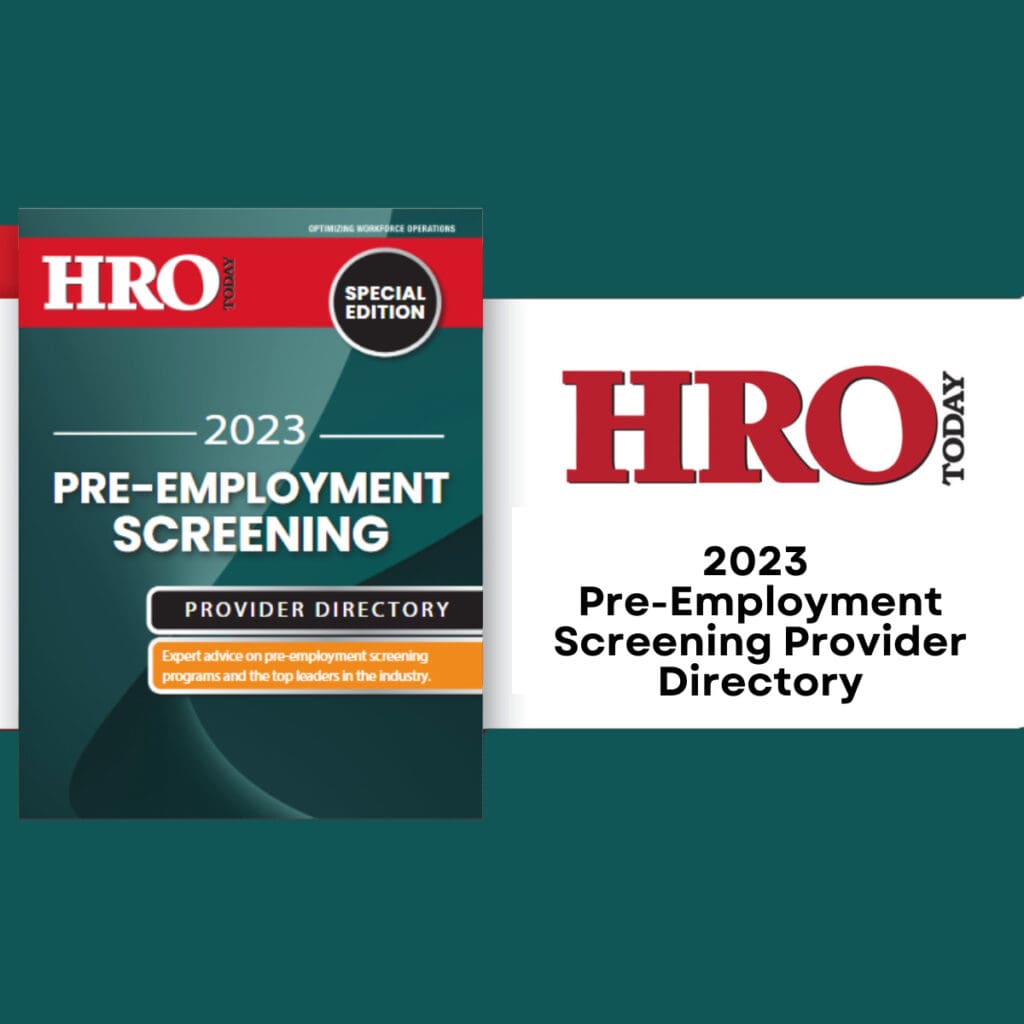The term “non-employee” may sound strange, but it’s actually becoming quite common and describes an increasingly large percentage of the workforce. According to the most recent U.S. Department of Labor survey, roughly 30 percent of the American workforce (or 42.6 million people) are contingent workers. These employees, though not always physically present in the office, perform many of the same functions, often have access to the same sensitive company information and, in some cases, are offered the same benefits as traditional employees. So shouldn’t they be subject to the same background screening process?
While this seems logical enough, it is not always the case. Despite the risks associated with insufficient screening, some employers don’t feel they have the time or resources to subject contingent workers to a standard screening process and instead opt for a less thorough approach. More often though, the trouble arrives as a result of a miscommunication between the employer and the third-party screening provider that they employ.
“Sometimes, less screening is conducted on contingent workers due to the fact that outsourced staffing partners tend to conduct the minimum level of screening so not to impede the chance of getting a candidate placed and to save costs,” Bob Capwell, chief knowledge officer for EBI, explains. “In addition, if the contingent worker is considered for a full-time position, it is assumed that the company will conduct additional screening at that time.”
Capwell goes on to say that the number of potential problems can vastly outweigh the initial cost savings of skimping on screening.
“Minimum screening does not provide the same level of due diligence for reducing risks,” he says. “Even if comprehensive screening is done at a later date and turns up something that may disqualify the candidate for fulltime employment, it could come at a high cost due to the costs of recruitment, training, and on-boarding. It may also have a negative effect on the relationship between the company and an outsourced staffing firm.”
In a worst-case scenario, a company that doesn’t perform adequate screening could end up with an employee illequipped to do their job or worse -an employee with a dangerous criminal record.
This is exactly what happened to Burdine’s, a premier FL department store. The store hired two contingent employees who could be contracted to clean air ducts and perform other services in people’s homes. Little did they know, one of the men was a dangerous criminal.
A woman named Cathy Sue Weaver contracted Burdine’s to have the air ducts cleaned in her home, and these particular employees were sent to perform the task.
A thorough background screening would have told Burdine’s staff that not only did both of the men had criminal records, but one of them, Jeffrey Hefling, was a twice-convicted sex offender on parole. Six months after the contracted work was completed, Hefling returned to Weaver’s home to sexually assault and murder her.
Although this is an extreme example, the consequences of inadequate screening are very real, and Weaver’s tragic story is not the only case of its kind. An unscreened or under-screened employee can quickly become a liability to the company that hired them or even a danger to customers and clients. Therefore, it is primarily the responsibility of the employer -not the third-party provider or outsourced staffing partner -to ensure that employees have been screened properly.
“An employer can be held liable for harm resulting from the acts of its employees. An employer is particularly susceptible to liability when they hire an individual that they know or should have known has a history of being dangerous or dishonest,” says Heidi Seaton, vice president of compliance at Orange Tree. “Employers have a duty to keep their own employees safe at work, and to protect customers and other members of the public from harm caused by an employee. Under a negligent hiring theory, it is unlikely to matter to a court whether the employee is a full-time or temporary employee or a direct or contingent worker. So, employers that do background screening on their direct hires in order to mitigate this negligent hiring risk, are well served to ensure that they are doing the same for the temporary staff and contingent workers.”
Fortunately, there is a simple way to avoid these risks that does not require employers to develop a brand-new screening process for contingent workers: put them through the same screening process as any other employee. This approach not only creates a sense of fairness and equality in the hiring process for all employees, but also allows employers to mitigate risk and thoroughly understand every candidate’s history before bringing them on board.
“From a best practices perspective, using the same background screening provider with the same packages and the exact same process is the recommendation,” Brandon Phillips, president and chief executive officer of Global HR research, explains. “That way there’s no separation between what you’re doing for your contingent force and what you’re doing for your employee base.” Phillips adds that a single screening process also makes it easier for temporary employees to transition to permanent roles and therefore is in the best interest of the worker as well. It should be noted that a complete and equal background screening process requires clear communication between the hiring organization and any third-party providers involved with verifications.
Here are three best practices for keeping the screening process for contingent workers in check:
1. Have a policy. If there is already a strong preemployment screening program in place, consider extending it to include contingent workforce hires. This process should also include training procedures for the HR team and hiring managers so that they know how to comply with the policy.
2. Streamline the process. Even though these workers are often not permanent fixtures in the organizations, the process for screening them should be equally rigorous if not identical to the process for regular employees. This prevents questionable characters from slipping through the cracks and into the workforce. It also makes transitions to more permanent positions smoother for those being screened.
3. Keep third parties informed. Many contingent employees are brought in with the help of staffing agencies and other third-party providers. It is therefore crucial that those providers are kept well-informed and up-to-date on a company’s screening requirements and procedures. Be specific, and be detailed -a simple list of background screening services to be completed by position may not be enough. For instance, if the position requires verification of past employment, make sure the agreement details how many years of employment history are required to be confirmed. Also talk with the partner agency about what expectations you have for verifying when a past employer is unable to be verified through traditional means.
Safety in Numbers
A roundup of statistics that show the value of verifications.
• 88 percent of recruiters have found a lie or misrepresentation on resumes and/or job applications
• 84 percent of HR professionals reported that background screening uncovered issues that would not otherwise have been found.
• Every six minutes a convicted criminal tries to volunteer or attain a position at a nonprofit organization.
• Employers lose an estimated 79 percent of negligent hiring lawsuits, and the average jury award exceeds $1 million.
• According to a recent survey conducted by a ARS, 53 percent of employers never re-screen members of their staff. (Source: ARS)
• 35 percent of small business failures are attributed to employee-related crime.
• Only 52 percent of HR professionals believe that background screening results in a better quality of hire, and 46 percent believe that it results in more consistent safety and security.
• 27 percent of employers reported the cost of a bad hire exceeded $50,000. (Source: HireRight’s 2014 Annual Employment Screening Benchmark)
• Around 9 percent of all job applicants claim degrees they do not possess.
Sources: HireRight’s 2016 Annual Employment Screening Benchmark, http://sueweavercause.org/facts-stats/
The State of the Sharing Economy
Rideshares, office shares, homeshares, and other parts of the sharing economy are here to stay, but this new economy is far from stagnant. According to the National League of Cities’ (NLC) Shifting Perceptions of Collaborative Consumption report, which polled leaders in 30 major American cities, more than half (55 percent) of cities indicated that they have seen some growth in the sharing economy, with 16 percent classifying this growth as rapid.
Although there are clear benefits to the sharing business model -improved services and increased economic and entrepreneurial activity to name a few -61 percent of city officials from the NLC’s survey cited public safety, lack of insurance, and general safety as concerns they have with the sharing economy.
Surprisingly, even some of the most popular sharing services lack even basic background screening procedures. AirBnB, for example, has no screening requirements for its renters or rentees. Their website asserts that “we don’t routinely perform background checks on Airbnb accounts -though we reserve the right to.” Likewise, the homesharing service encourages members of its web community to flag any suspicious or inappropriate activity. Is this enough to protect AirBnB from potential legal trouble? Probably not.
Other companies such as Uber are making an effort to improve background screening performed on their contingent workforce. In order to be hired as a driver, Uber requires that applicants provide their full name, date of birth, Social Security number, driver’s license number, a copy of their driver’s license, vehicle registration, insurance and proof of a completed vehicle inspection. Additionally, the rideshare company uses a nationally accredited third-party screening provider Checkr, which verifies the information provided and checks for a criminal record.
Any of the following could disqualify a potential driver:
• Appearing on the Department of Justice’s State Sex Offender Registry or the National Sex Offender Registry;
• Appearing on any database that flags terrorism suspects; and
• Having been convicted in the last seven years of DUI, fraud, reckless driving, hit and run, violent crimes, acts of terror, sexual offenses, felony, misdemeanor for theft, fatal accidents or resisting or evading arrest.














